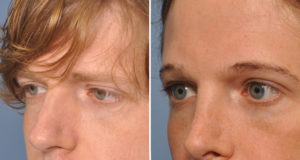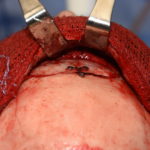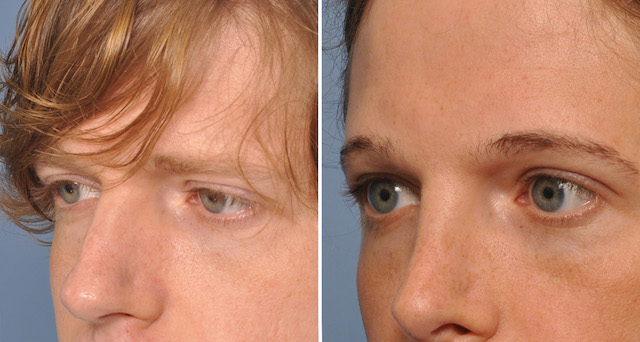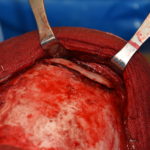In facial feminization surgery (FFS), forehead recontouring is an important one-third of the facial changes needed. There may be a few patients in which burring of the brow bone is sufficient to reshape the entire superior orbital rim. But most male to female brow bone reductions of any significance require the well described type III bone flap setback technique for an adequate brow bone reduction.


In some cases the bone flap may be put back and this is enough of a brow bone reduction. But when more significant reductions are needed or a complete side to side reduction effect is needed, burring of the edges of the removed bone flap site, the central sinus septum and intact medial orbital rims is needed. This allows the straightened bone flap to be setback even further and often has a more profound setback effect than any reduction of the actual bone flap itself. In either case 1.5mm microplate fixation of the bone flap is used. If the bone flap remains structurally stable after reshaping and has reasonable surrounding edge bone contacts a single midline fixation plate is all that is needed. This can be supplemented with restorable suture fixation at other points or even additional small plate fixation if desired.
In most cases there will always be some open areas along the flap-bone interface and these will go on to heal. I always cover the entire bone flap prior to closure with a resorbable collagen mesh with or without fibrin glue as a ‘sealant’. In that mesh small pieces of bone can be placed if there are larger gaps. In rare cases when much larger gaps exist that predicted small split thickness cranial bone grafts have been added to ensure complete bony healing.
Dr. Barry Eppley
Indianapolis, Indiana




